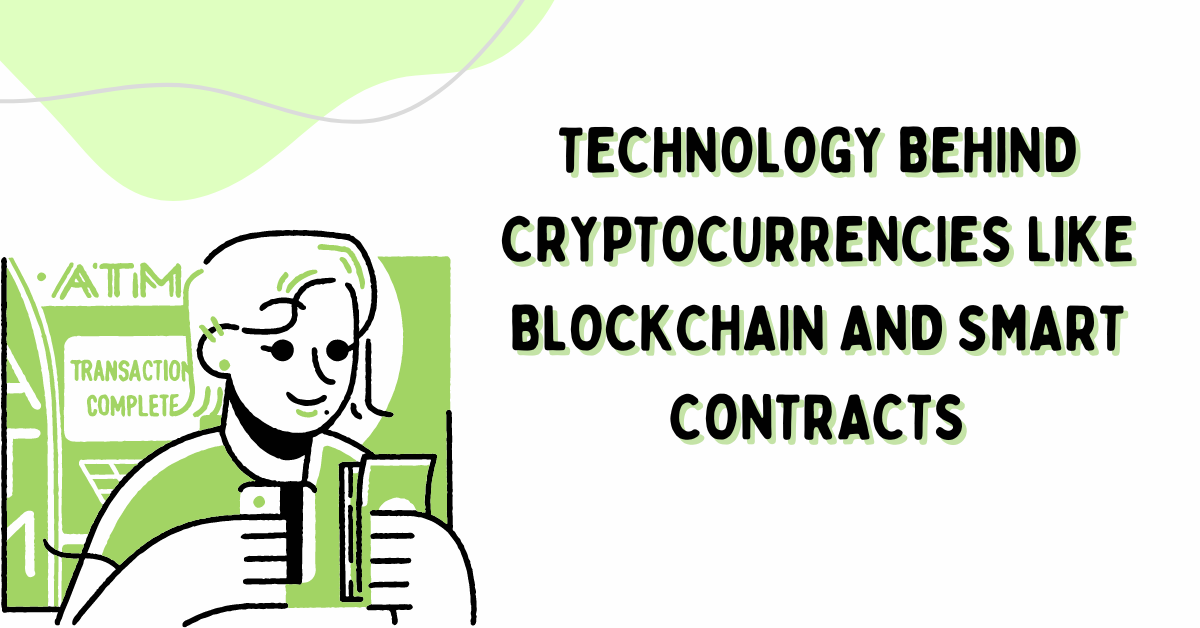Cryptocurrencies have revolutionized finance by introducing decentralized digital currencies built on innovative technologies like blockchain and smart contracts. Understanding the underlying technology is essential for anyone interested in cryptocurrencies and blockchain-based applications. In this guide, we’ll explore various resources where you can learn about the technology behind cryptocurrencies in depth.

1. Online Courses and Tutorials
Online courses and tutorials offer a structured approach to learning about blockchain technology and smart contracts. Platforms like Coursera, Udemy, and Khan Academy provide courses tailored to different skill levels, from beginner to advanced. These courses cover fundamental concepts such as blockchain architecture, consensus mechanisms, cryptography, and smart contract development. With interactive lectures, quizzes, and practical exercises, online courses offer a flexible learning experience that allows you to progress at your own pace and gain a comprehensive understanding of cryptocurrency technology.
2. Educational Websites and Blogs
Educational websites and blogs dedicated to blockchain and cryptocurrencies are valuable sources of information and insights. Sites like Investopedia, CoinDesk, and CoinTelegraph offer in-depth guides, articles, and tutorials on blockchain technology, smart contracts, and cryptocurrency trends. Whether you’re interested in exploring the technical aspects of blockchain or understanding its real-world applications in finance, supply chain, healthcare, and beyond, these resources provide authoritative information and analysis to help you stay informed and engaged with the latest developments in the cryptocurrency space.
3. Books and Whitepapers
Books and whitepapers provide comprehensive insights into blockchain technology and smart contracts, offering a deeper understanding of their principles and applications. Authoritative works like “Mastering Bitcoin” by Andreas M. Antonopoulos, “Blockchain Basics: A Non-Technical Introduction in 25 Steps” by Daniel Drescher, and “Smart Contracts: The Essential Guide to Blockchain Smart Contracts” by Jeff Reed cover a wide range of topics, from the basics of blockchain to advanced smart contract programming. Additionally, whitepapers published by blockchain projects and research institutions offer detailed technical documentation and analysis, providing valuable insights into specific blockchain platforms and protocols.
Books and whitepapers offer in-depth insights into blockchain technology and smart contracts, providing readers with comprehensive knowledge and practical guidance on understanding and implementing these concepts.
1. Books
- “Mastering Bitcoin” by Andreas M. Antonopoulos: This book is considered a must-read for anyone looking to gain a thorough understanding of Bitcoin and blockchain technology. Covering topics such as how Bitcoin works, cryptographic principles, and the mechanics of the blockchain, “Mastering Bitcoin” is an invaluable resource for beginners and experts alike.
- “Blockchain Basics: A Non-Technical Introduction in 25 Steps” by Daniel Drescher: Ideal for readers with limited technical background, this book offers a step-by-step guide to understanding blockchain technology in simple, accessible language. From the basics of cryptography to real-world applications of blockchain, “Blockchain Basics” provides a comprehensive overview of the technology’s potential impact across industries.
- “Smart Contracts: The Essential Guide to Blockchain Smart Contracts” by Jeff Reed: Smart contracts are a key component of blockchain technology, enabling automated, self-executing agreements. In this book, Jeff Reed explores the fundamentals of smart contracts, their use cases, and practical examples of smart contract development on blockchain platforms like Ethereum.
2. Whitepapers
- Bitcoin Whitepaper by Satoshi Nakamoto: The original Bitcoin whitepaper, published by the mysterious creator(s) Satoshi Nakamoto in 2008, laid the foundation for the world’s first cryptocurrency. Describing the concept of a peer-to-peer electronic cash system, the Bitcoin whitepaper remains essential reading for anyone interested in understanding the principles of decentralized digital currencies.
- Ethereum Whitepaper by Vitalik Buterin: Ethereum introduced the concept of smart contracts and decentralized applications, revolutionizing the blockchain landscape. In his whitepaper, Ethereum co-founder Vitalik Buterin outlines the vision for Ethereum as a programmable blockchain platform, enabling developers to build a wide range of decentralized applications.
- Hyperledger Whitepapers: Hyperledger, an open-source collaborative effort hosted by the Linux Foundation, publishes whitepapers on various blockchain projects and protocols within the Hyperledger ecosystem. These whitepapers provide detailed technical documentation, architecture overviews, and use case analyses for platforms like Hyperledger Fabric, Sawtooth, Indy, and Besu.
4. Online Communities and Forums
Engaging with online communities and forums is a great way to learn from experts, enthusiasts, and peers in the cryptocurrency space. Platforms like Reddit’s r/cryptocurrency, BitcoinTalk.org, and Stack Exchange’s Bitcoin and Cryptography communities host discussions, Q&A sessions, and debates on various topics related to blockchain technology and cryptocurrencies. Participating in these communities allows you to ask questions, share knowledge, and exchange ideas with like-minded individuals, fostering a collaborative learning environment that enables you to stay updated on the latest trends and developments in the cryptocurrency ecosystem.
5. Developer Documentation & Resources
For those interested in technical aspects of blockchain technology and smart contracts, developer documentation and resources provided by blockchain platforms offer valuable insights and guidance. Platforms like Ethereum, Hyperledger, EOSIO, and Tron offer comprehensive documentation, tutorials, and tools for developers to build decentralized applications (DApps) and smart contracts. By exploring developer documentation and experimenting with coding exercises and projects, you can gain practical experience and expertise in blockchain development, enabling you to contribute to the advancement of blockchain technology and participate in the vibrant ecosystem of decentralized innovation.
1. Ethereum
As one of the most widely used blockchain platforms for decentralized applications (DApps) and smart contracts, Ethereum offers extensive developer documentation and resources. The Ethereum Developer Portal provides comprehensive guides, tutorials, and tools for building and deploying smart contracts using programming languages such as Solidity and Vyper. Developers can explore the Ethereum Virtual Machine (EVM), Ethereum Improvement Proposals (EIPs), and the Truffle Suite for smart contract development, testing, and deployment.
2. Hyperledger
Hyperledger is an open-source collaborative effort hosted by the Linux Foundation, focused on advancing blockchain technologies for enterprise use cases. The Hyperledger Fabric documentation offers detailed guides, tutorials, and samples for building permissioned blockchain networks and smart contracts. Developers can explore Hyperledger Composer for modeling and deploying business networks, as well as Hyperledger Indy, Sawtooth, and Besu for specific use cases such as identity management, supply chain, and finance.
3. EOSIO
EOSIO is a blockchain protocol designed for high-performance decentralized applications and smart contracts. The EOSIO Developer Portal provides comprehensive documentation, tutorials, and SDKs for building and deploying DApps on the EOSIO platform. Developers can leverage the EOSIO.CDT (Contract Development Toolkit) for writing smart contracts in languages like C++ and JavaScript, as well as tools like EOS Studio for testing, debugging, and deploying smart contracts.
4. Tron
Tron is a blockchain platform known for its scalability and high throughput, making it suitable for building decentralized applications and smart contracts. The Tron Developer Hub offers extensive documentation, APIs, and SDKs for developers looking to build on the Tron network. Developers can explore the Tron Virtual Machine (TVM), TronWeb JavaScript library, and TronGrid API for interacting with the Tron blockchain and deploying smart contracts.
5. Additional Resources
In addition to platform-specific documentation, developers can also benefit from a wide range of resources such as online tutorials, forums, and developer communities dedicated to blockchain development. Websites like Stack Overflow, GitHub, and Medium host a plethora of tutorials, code samples, and discussions on blockchain technology and smart contract development. Engaging with developer communities and attending hackathons, workshops, and conferences can provide valuable networking opportunities and hands-on experience in blockchain development.
Conclusion
Learning about the technology behind cryptocurrencies like blockchain and smart contracts is an exciting journey that offers endless opportunities for exploration and discovery. Whether you prefer online courses, educational websites, books, online communities, or developer documentation, the key is to leverage a combination of resources that suit your learning style and goals.
By immersing yourself in the world of blockchain technology and cryptocurrencies, you can gain the knowledge, skills, and insights needed to navigate the complexities of this rapidly evolving ecosystem and unlock its full potential for innovation and disruption.


❤️❤️❤️
🥰🥰🥰
🍓🍓🍓
Thanks